1930 – 1960
The White Star Line’s history had never seemed to recover since the terrible tragic of the Titanic in 1912. Only four years later, the third of the Olympic-class vessels – the second Britannic – went to the bottom in the Mediterranean as a casualty of World War I. The war itself meant bad times for the White Star Line. Not until 1927 did the company put in service a ship of distinction, if you do not count the German war-prizes from the beginning of the decade. She was the Laurentic, and started a modernisation inside the White Star Line. The Laurentic sported the new spoon-shaped stern, which would later be seen on the Queens and other famous vessels. However, the ship was yet somewhat of a throwback with its pencil funnels and blunt bow. To receive a reputation of being a modern company, the White Star Line had to take one more step away from traditional shipbuilding.
When the Cunard Line and the French Line started off with their projects of building the Queen Mary and the Normandie, the White Star Line too wanted to compete. They presented plans of a ship with a thousand feet in length, and a speed to rival the ship’s two competitors. The ship was supposed to be named Oceanic after the first steam vessel in White Star possession. But as timed hardened and the Depression drew closer, White Star had to cancel their ship. Cunard put all work on their ship on hold. Only the French managed to continue their work.
Since the building of the Oceanic already had begun in 1928, lots of steel now lay unusable. Instead of throwing it away, White Star decided to have it put in another vessel, a vessel similar to the Oceanic’s planned proportions. Just as with the Queen Mary and the Normandie, the Oceanic was supposed to bear three squat funnels. The new and smaller ship would only sport two of them, but otherwise be a copy of the thousand-footer. The name of the vessel that would bring the White Star Line into the modern world of shipbuilding, was Britannic.
On August 6, 1929, the Britannic was launched. The world was interested in White Star’s new notion of external design. One interesting feature was that the ship’s forward funnel – not the aft one – was a dummy. This dummy was not used for ventilation as ordinary dummy-funnels used to; it housed the radio cabin and the engineering officer’s smoking room. In June, the next year, the world’s heart would beat one extra beat, when the inside of the ship was revealed upon delivery. It was obvious that the new ‘Art Deco’ style had influenced the ship. Much light wood and other artistic novelties were shown inside the ship. The Île de France from 1927 had set the pattern. The Britannic’s maiden voyage started off from Liverpool on June 28, 1930, and continued to Belfast and Glasgow, before heading for New York. The passengers could choose to travel in three classes: Cabin, Tourist and Third. This dividing (instead of First, Second and Third) meant that the ship’s lower class had been given less space, and so had the higher class. All about the liner circulated around equality and this lead to that the Britannic became a very popular ship.
It was not only in appearance that the Britannic was a novelty. The ship’s machinery was of an entirely new breed. She was the first major British motor-vessel on the seas, and her two Diesel engines – developing 13,000 horsepower each – only consumed half of the amount of fuel an ordinary steam vessel did. This made the Britannic an interesting point of view when shipbuilders in the future decided upon Diesel machinery instead of the classic steam engine. But it would take time before the Diesel would rule the market. The Queen Elizabeth 2 of 1969 had her engines remade from steam to diesel-drive in 1987! The efficiency of the Britannic’s Diesel engines could easily be proved by showing the radiators in the engine-room, used to heat the cold place.
In 1934, both the White Star Line and the Cunard Line had suffered so terribly from the Depression that the two former rivals had to merge in May that year. It was the British Government that forced the two companies together when Cunard needed a loan for the still unfinished Queen Mary. Thus,the Queen partly became a White Star ship. One can only assume that the ship’s dated white forecastle was a White Star brainchild, since Cunard’s ships had never used a raised white forecastle – that was something of a White Star ‘logo’. This raised forecastle also appeared on the Britannic, but it was connected with the ship’s middle superstructure, just as the second Britannic sported.
When the merger was completed, both shipping companies remained with its own identity. The former White Star vessels continued to sail in their old livery, with buff funnels and yellow stripe along the hull. The first years of the new company became disastrous for the bereaved old White Star fleet. Ship after ship went to the scrappers, even the magnificent Olympic was cut up before the age of thirty. By 1936, the only ships in service that had once been in the White Star Line was the Britannic and her two years younger sister Georgic. These two vessels were the only ones that the new Cunard White Star spent any money on. The grand old Adriatic only served in the new company for a few months before scrapping.
After a few prosperous years in the twenties, the world faced the Depression. This meant weak human fates, and that was what the German Führer Adolf Hitler took advantage of when he double-crossed his countrymen to vote on the Nazi Party. When Hitler was in power-position, he wanted to remedy the pride Germany had lost after the First World War. He wanted to expand his Reich, and started off by invading his eastern neighbour Poland on September 1, 1939. Britain and her allies could not tolerate this, and declared to Hitler that if his military power in Poland was not removed until 11.00 a.m. on September 3, Britain would declare war on Germany. Hitler had assumed this, and at 11.00 a.m., on September 3, 1939, the Second World War begun.
This required means of transportation. The Queen Mary and her new sister Queen Elizabeth were both called in as troop-ships. The Britannic had been called in before the war started, on August 29. The soldier accommodation was first decided to be around 3,000, but later it was increased to 5,000. Britannic soon went through her first war duties when she shipped soldiers between Clyde and Bombay. By 1943, she was employed carrying troops between the Americas and Algiers in the so-called ‘Operation Husky’. When the war ended in 1945, the Britannic had carried over 180,000 troops and steamed 376,000 miles.
After a year of repatriation work between Britain and the Far East, the Britannic was returned to Cunard White Star in March 1947. The ship was converted back into a passenger liner at Liverpool, and when she re-appeared in service in 1948, the ship had had her tonnage increased to 27,650 tons due to the improvements that had been done. One of the novelties was that the promenade deck had been glassed in – a common improvement on liners. To further make money for her company, the Britannic made cruises from New York to the Caribbean during wintertime.
In May, 1950, the Cunard part of the Cunard White Star Line had become so dominating that it swallowed the White Star part, and after this the Cunard Line was back in business, and the White Star Line had vanished forever. In spite of this, both Britannic and Georgic continued to sport their lovely White Star livery until their withdrawals.
The same year, in June, the Britannic collided with the United States Liner Pioneer Land in the Ambrose Channel, New York. After a thorough inspection, the Britannic was declared seaworthy, and continued her voyage. Even though a sturdy ship, the Britannic suffered of the declining number of passengers on the North Atlantic. In order to keep herself alive, every winter was now booked for long cruisings to temperate areas. More and more people seemed to enjoy this new way of spending time.
The White Star Line definitely left history on November 11, 1960, when the Britannic set out on her last voyage from Liverpool to New York. The last year had consisted of endless engine-problems and this was certainly one of the reasons of the ship’s withdrawal. The Britannic’s younger sister Georgic had disappeared already in 1956. Perhaps she would have lived longer if it were not for the terrible injuries she received during the war. On December 2, the Britannic was back in Liverpool and two days later she was sold to British Iron & Steel Co. The scrapping was made by Thos. W. Ward at Inverkeithing in the year of 1961.
Specifications
- 712 feet (217.5 m) long
- 82 feet (25 m) wide
- 26,943 gross tons
- Burmeister & Wain diesels powering two propellers
- 18 knot service speed
- Passenger capacity of 1,553 people

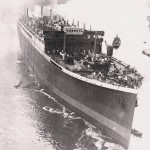
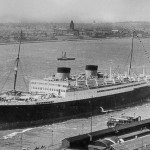
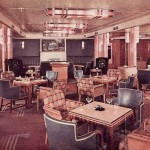
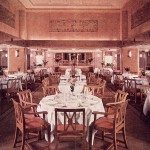
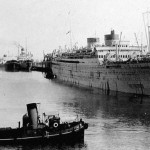
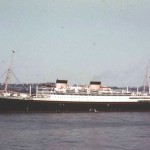
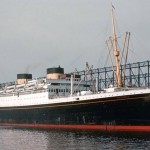
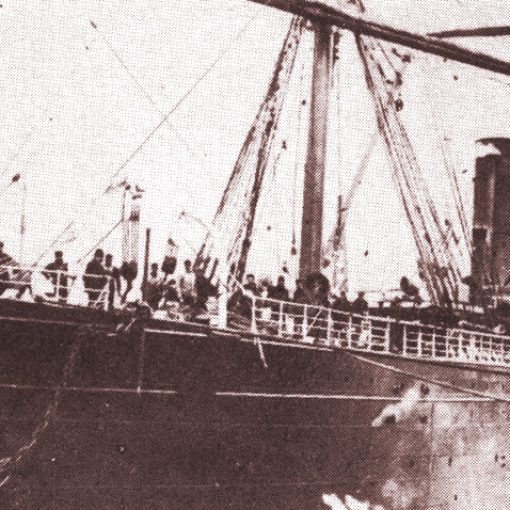
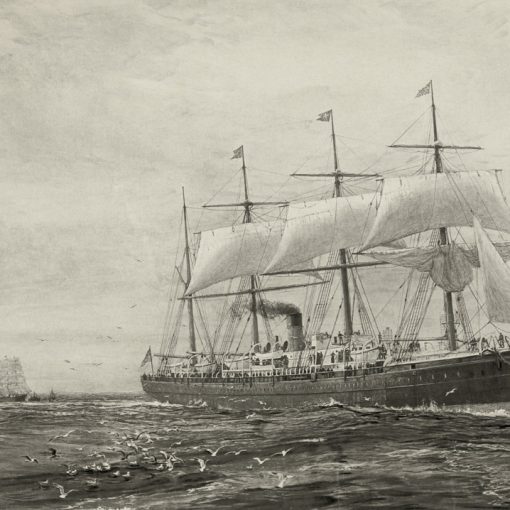
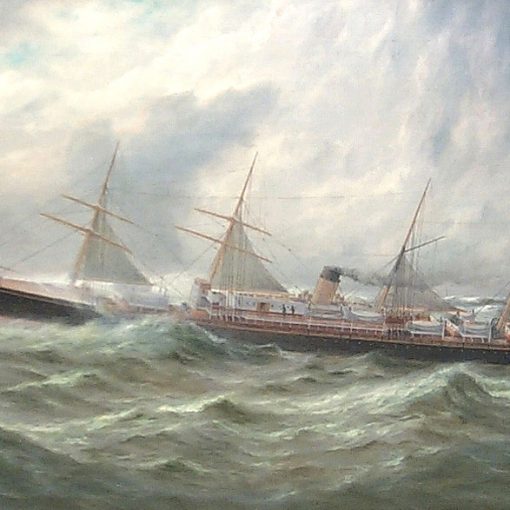
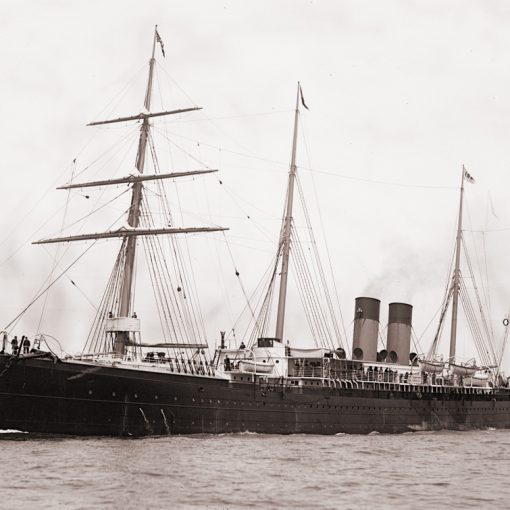
One thought on “Britannic (III)”
I do not see how you can say Laurentic signalled modernisation, especially when she had combined reciprocating and turbine propulsion and was coal powered (both outdated aspects of maritime design by 1927).
Both Laurentic and Doric would have been retained by the merged company, had it not been for their respective collisions and cost of repairs.
Hitler did not expect Britain to declare war. He thought they would appease him, as they had done over the Rhineland; Austria; and Czechoslovakia.
WW2 starts on different dates according to the county, i.e. for Norway; Denmark; Belgium and the Netherlands, its 1940. For Greece; Yugoslavia and the USA, its 1941
Your comment about the white raised forecastle on the Queen Mary being a result of WS influence is totally erroneous. An early design proposal (before construction began in 1930, let alone the merger in 1934), shows the proposed vessel with a counter stern (later replaced by a cruiser stern) and a white raised forecastle.
Equally, you can not say a ship has a raised forecastle if it is attached to the middle superstructure. Accordingly, Britannic didn’t have a forecastle.